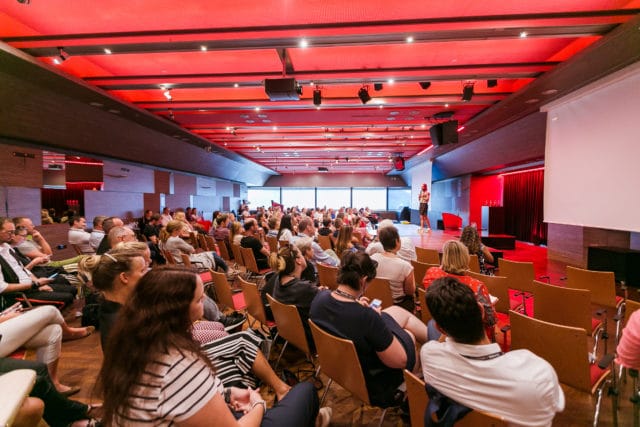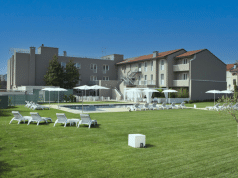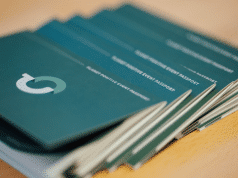COVID-19 has shaken the meetings industry in every country. While some conferences went online, they will fail to deliver the value in-person conferences can achieve. This is a good thing. To follow Gorazd Čad’s article, “The Meetings Industry Burnout”, we need to use this crisis to reinvent why and how we meet. By definition, conferences are opportunities for people to “confer”. Did we forget this? What does it mean for people to confer? What is possible when people confer? These are useful questions to ask.
There is an urgent need to measure the Return on Conference Investment (ROI). All corporate, association, and public sector events need to demonstrate how conferences can help organizations regain success and innovate for the future. Measuring the ROI invested of conferences is hard. In 1998, MPI (Meeting Professionals International) said the conference industry had been slow to focus on measuring the return on the millions of dollars invested in events. Has much changed in 20 years? Conferences are mainly judged by the profit they make, not the value they create. As Čad’s article suggests, it’s time to change the way we create and measure value in this meeting industry.
Making conferences more effective
I spoke at 250 conferences in 10 countries on innovation and creativity. This work provides useful tools for event planning: design thinking, user experience, and behavior insights. These are the innovation tools we used for 20 years. This led to a pioneering book I wrote in 2007, Seven Rules For Designing More Innovative Conferences.
Our exploration for innovation in conference design started as a challenge from Inc. Magazine (US business magazine) to make its conferences more “effective”. Its editor believed an effective conference should help participants capture more ideas during the event and act on them for their future success. This made sense from an innovation perspective, yet it was very different for the conference industry.
A single comment from a conference participant shaped the problem we faced. He said, “I go to lots of conferences, take notes, and never look at them again.” We wondered how many people would also admit to this behavior. We did some research and discovered about 75 per cent of participants of several events said they take notes and never look at them again. Would this be different in Europe? Perhaps. Has technology changed this? Not likely.
We then focused on improving the skills of conference participants to “participate” in conferences. These were skills to make notes, listen to different types of speakers, create ideas, and engage with speakers, content and other participants. This led to many ideas. Many conferences now start with a few minutes of conference coaching. I encourage organizers to give participants tips for getting more value from a conference. After a brief welcome, have the MC ask, “Has anyone come to a conference like this, taken notes, and never looked at them again?” They put up their hand and wait. Most hands will go up. Laugh at this. Then challenge people to set personal objectives for their participation in the conference. Also, challenge people to use the resources at the conference to solve business problems or create new opportunities while they listen to the speakers. Prompt them to turn their learning into ideas. Participants can also use others to brainstorm ideas.
I studied the meetings industry. I read the “how to plan a conference” books and found chapters on content. I was told conferences can achieve three objectives:
- Learning
- Networking
- Motivation
Learning is a useful objective if it helps participants be more successful in the future. I have spoken at conferences with high-profile keynote speakers who had nothing to do with the industry. If networking is part of your objectives, design a networking strategy to prompt people to meet.
While there is nothing wrong with these objectives, they also describe training.
Why are we satisfied with learning as an objective? Conferences can go beyond learning and prompt people to use what they learn. As a speaker, I saw that the true experts at conferences are those in the audience, not on stage. I started to design events to use this expertise by adding two more objectives:
- Collaboration – whether you have 25 or 2500 people in a conference room, this is a vast amount of brain power. How can you harness the collective brain power of a room for some part of the conference? There are many ways.
- Innovation – if people collaborate, what can they create? Can we use participants to solve a challenge? Build in time for participants to create more ideas that could become personal innovations?
Here are two simple examples of collaboration.
1. UNEXPECTED RESULT FROM POOR PLANNING
I spoke at a company conference for 120 staff and managers in New Zealand. Another speaker ended 25 minutes short. The meeting planner asked for help. I went back on stage to talk about ideas. I told people to use a page from their notepads. I told them to write: “To make this a better company to work for, my idea is…” I gave staff 15 minutes to provide one or more ideas. We collected 160 ideas. I organized these ideas and presented 40 to the CEO. He said this list of improvements was worth the cost of the event. Any conference can change a keynote from 75 minutes to 45 minutes:
- Have the speaker or MC set up the need for new ideas and explain the process.
- Give people 10-15 minutes to write down one or more ideas (in full sentences).
- Collect them. Read two ideas to show the importance of this feedback.
- Tell the audience what will happen to their ideas.
Challenges could be:
- What are the big challenges you face next year?
- How could we make this a better company to work for?
- What have our customers told that is ‘wrong’ with our company? How could we fix it?
- How could improve the way we service our customers?
2. GETTING YOUR AUDIENCE TO CREATE IDEAS
The focus of this one-day event was “Leadership for Innovation”. The audience was 230 CEOs from corporations in Australia. People sat at 35 round tables.
I was asked to be the fifth speaker on innovation. I said “no”. I proposed to create 35 table brainstorming teams. Each table picked a facilitator. Each was given a one-page written challenge and instructions. Each table had to create five ideas to solve the specific challenge I gave them. After my 10-minute introduction, the focus shifted to individual tables. I made it clear that each facilitator had to summarize five key ideas in full sentences. About 200 ideas were collected. The organizers were so impressed they published a book and mailed it to participants. This enhanced the reputation of the host organization as well.
These ideas and opportunities created when people collaborate at conferences have true value.
Bridging the Gap
We promote conferences as changing the world. If few people look at their conference notes, we are not changing anything. If there was an easy way to measure Return on Investment, we may not like the results. Since we do not have a sophisticated way to measure the value of a conference yet, you can count on these assumptions to improve the bottom line of your conference.
- When a conference is designed or commissioned with clear and concise objectives to define what it is to achieve, there is a much greater probability that it will actually impact the bottom line of the person, association or company. Use all five objectives (listed above). Go beyond learning.
- The value will grow when participants actively participate and take responsibility for the results they achieve. Encourage people to define personal challenges for the event.
- The greater the involvement of the audience, the greater the value it will create. Hiring speakers to fill time on an agenda is easy; designing a session for collaboration is harder. Yet, this is how we create value.
- Encourage participants to ‘bridge the gap’ between the excitement and motivation of the event and the use of the ideas, skills and motivation at work. Built in time for participants to use the content to create new ideas for their sucess.
- The most effective conferences will prompt people to act on their ideas after the event in ways that lead to the bottom line. These will have the greatest return on investment. Technology can be useful for the post event engagement.
By adding objectives for collaboration and innovation, and building in time during a conference for collaboration, my belief is that conferences will generate more ROI. People will remember where their ideas came from that made them successful. They will want to pay to come back. This is the best way to prove that in-person conferences will have a long future.















